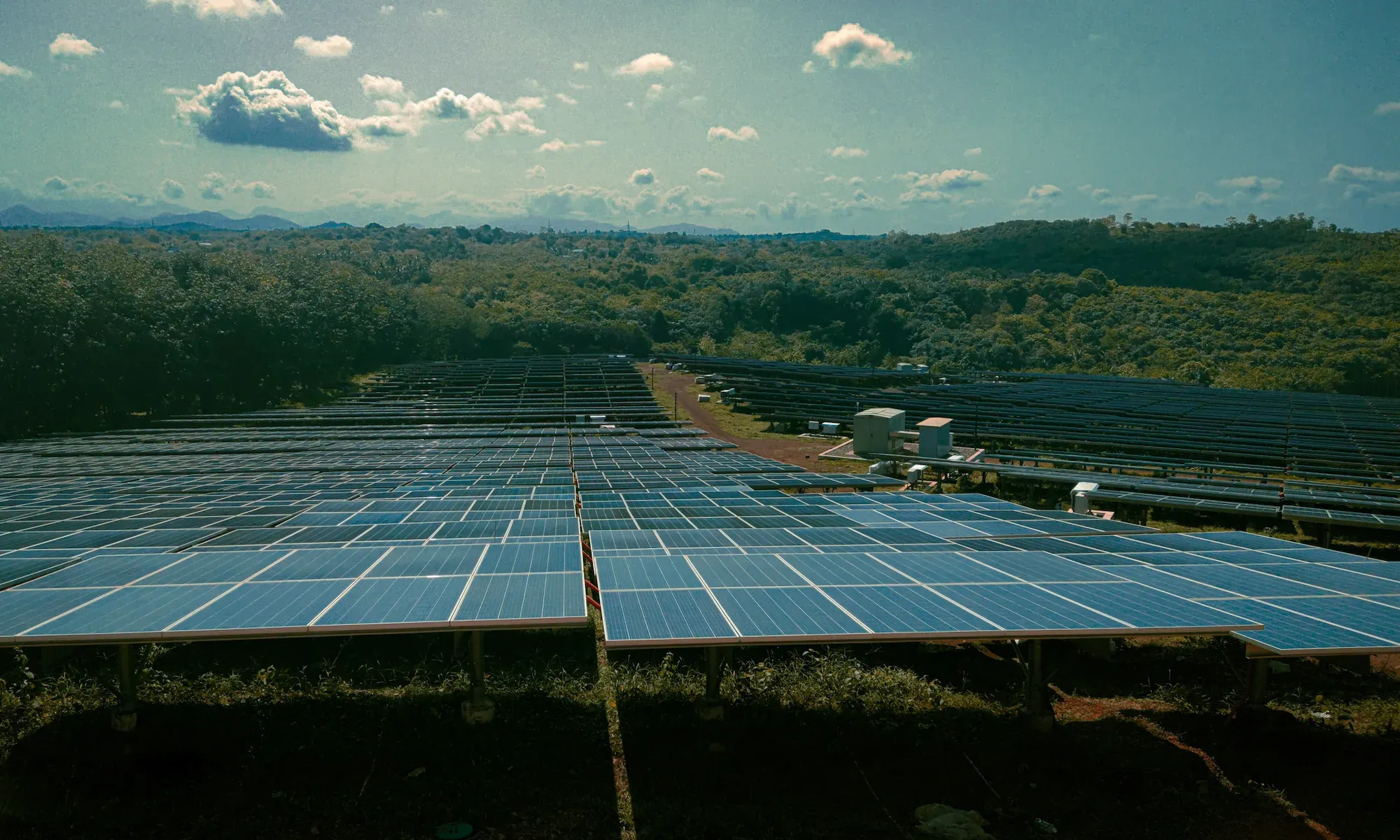Green Bond Tokenization: Bringing Green Finance to the Blockchain
Green bond tokenization is reshaping the future of sustainable finance. Dive into how blockchain turns traditional green bonds into digital tokens that make climate investing smarter, fairer, and truly global.

Imagine you could invest just $100 to help fund a solar farm or a green building and track the impact of your money in real time. This is the promise of green bond tokenization – a new way to finance environmentally friendly projects using digital blockchain tokens. Green bonds (bonds dedicated to climate and environmental projects) are booming; the global green bond market reached about $580 billion in 2023, pushing total green financing to over $2.5 trillion. Investors are eager to support sustainable projects, but traditional green bonds have often been out of reach for everyday people. High minimum investment amounts, slow paper processes, and lack of transparency can make it hard for smaller investors to participate.
Green bond tokenization aims to break these barriers. In this article, we will explore what tokenization means in simple terms, how tokenized green bonds work, and real examples of this idea in action. By the end, you’ll see how combining blockchain technology with sustainable finance can make green investments more accessible and transparent for all. Let’s dive in!
What Is Green Bond Tokenization?
First, what exactly is a green bond? In short, it’s a type of bond where the money raised is used for environmentally friendly projects like renewable energy, clean transportation or green buildings. Governments, cities, or companies issue green bonds to fund things such as solar power plants, energy-efficient housing, or new electric buses. Investors who buy the bond earn interest, and they expect their money to support a real eco-project.

Next, what is tokenization? Tokenization means turning ownership of an asset into digital tokens on a blockchain. In the case of bonds, tokenization creates a digital version of a standard bond recorded on a blockchain. Instead of a traditional paper certificate or an entry in a bank system, the bond is represented by many small digital tokens. Each token might be worth, say, $50 or $100 and represents a tiny slice of the total bond value. Investors can buy as many tokens as they want – even just one token – which makes the bond much more accessible to people who could never afford a whole bond in the old system. (A typical traditional bond might require $100,000 minimum, but a tokenized bond could let you start with $50.) In other words, a tokenized green bond is a green bond broken into bite-sized digital pieces that anyone can own.
Because these tokens live on a blockchain, some clever things become possible. For one, smart contracts can automate many tasks. For example, the bond’s smart contract can send interest payments straight to investors’ digital wallets on schedule. There’s no need for banks to manually process coupons (interest payouts) – the code handles it. Transactions are also recorded on a public ledger that anyone can verify. This transparency builds trust: investors and regulators can see that the funds are going where they should, which is very important for a green bond, because nobody wants the money diverted to something that isn’t green.
In fact, blockchain technology can even link to real-world data feeds. Some tokenized bonds plan to tie payments to actual project performance – for instance, linking the bond’s interest rate to the solar energy output of a project. Investors could earn slightly more if the solar panels produce more electricity, aligning investment returns with real environmental impact. Even if not linked to payments, the real-time data (like how many tons of CO₂ saved or kilowatt-hours generated) can be published to the blockchain for everyone to see. This provides proof of the green impact on a live basis, not just in an annual report.

Overall, a tokenized green bond works just like a normal bond – you lend money and earn interest – but it is chopped into tiny, tradeable units and powered by digital technology for efficiency. This concept is quickly gaining attention in the sustainable finance world. For example, in a recent blog post we explored how tokenized green bonds could fund a solar project in Curitiba, Brazil, helping the city install solar panels on 2,600 public buildings. But why go through the trouble of tokenizing a bond? Let’s break down the key advantages:
- Greater Accessibility: By issuing many small tokens, green bonds become open to small investors who can invest as little as a few hundred dollars instead of tens of thousands. This broadens the investor pool to include local communities and ordinary people, not just banks or funds. For example, a tokenized bond platform might let individuals buy in with just $100 via a smartphone app, whereas traditional bonds often required around HK$10,000 (over $1,200) minimum in places like Hong Kong.
- Improved Transparency: Blockchain records every transaction, providing an open audit trail of where the money goes. Smart contracts can even embed real-time reporting on how the bond’s proceeds are used. Investors can verify that their money indeed funded the solar farm or wind project as promised, reducing the risk of “greenwashing” (making false claims about environmental benefits). In one case, Hong Kong linked its tokenized green bond to a popular payment app so that investors could see live data on clean energy generated and carbon emissions avoided by their investment.

- Liquidity (Ease of Trading): Traditional bonds can be hard to sell before they mature – you often need to find a buyer over-the-counter and deals can take days. Tokenized bonds, however, can be listed on digital exchanges for 24/7 trading, so investors can buy or sell tokens anytime much more easily. If you suddenly need your money back, you could sell your green bond tokens on a secondary market, giving investors flexibility and an “exit” option that was rarely available for regular municipal or project bonds.
- Efficiency and Lower Costs: Automation cuts out many middlemen. Processes that once took days of paperwork (issuing bonds, transferring ownership, paying interest) can happen almost instantly with smart contracts. This can lower administrative fees and settlement times. Early tokenized bond pilots have shown that using blockchain can reduce fees and even slightly improve interest rates for issuers, because the streamlined process is cheaper and attracts more investors. In short, tokenization can stretch each dollar further in a green project by reducing banking and issuance costs.
By combining these benefits – accessibility, transparency, liquidity, and efficiency – green bond tokenization offers a powerful new tool to finance sustainable development. It opens the door for more investors to put their money into climate solutions, and it assures those investors that their funds have a tangible impact. Now, let’s look at some real-world examples where tokenized green bonds are being used or tried out in practice.
Real-World Examples of Green Bond Tokenization
Tokenized green bonds are not just theoretical. Around the world, innovators in both the public and private sectors have started to experiment with this novel financing method. From major governments to startup platforms, here are a few notable examples showing how green bond tokenization is moving from idea to reality.
Hong Kong’s Pioneering Tokenized Government Bond
One landmark case happened in Hong Kong. In February 2023, Hong Kong became the first government in the world to issue a tokenized green bond. The Hong Kong Monetary Authority (HKMA) supported this pilot issuance on a blockchain platform. The bond raised HK$800 million (about US$102 million) for one year at a 4.05% interest rate. It was issued under Hong Kong’s Green Bond Program, meaning the funds were dedicated to approved green projects. In fact, according to the government’s report, the proceeds went mainly into green buildings and water management projects – exactly the kind of infrastructure upgrades that make the city more sustainable.

What was special about this Hong Kong bond wasn’t the size , but the way it was issued and managed. The entire bond was represented digitally, and only digital tokens on a permissioned blockchain were sold to investors. This experiment showed how a large public issuer could use blockchain to increase efficiency and transparency in green finance. Hong Kong’s approach also tackled the transparency issue: by using blockchain and partners like Allinfra, they provided real-time data on the bond’s environmental impact. Investors could open an app and see how much clean energy had been generated by projects financed through the bond and how much CO₂ emissions were reduced, updated live in the Octopus mobile app. This level of granular reporting is very hard to achieve with traditional bonds. It helps prove to investors that the bond is delivering real green results, not just promises.
Another big advantage was the potential to include everyday investors. While the first tokenized green bond in Hong Kong was sold to institutional investors, it laid the groundwork for broader access. Hong Kong demonstrated that, in principle, individual citizens could invest in tokenized bonds in small denominations (as low as HK$100). By 2024, the Hong Kong government was confident enough to do a second, much larger digital green bond issuance – worth HK$6 billion – and even issued it in multiple currencies (USD, Euro, and RMB) on blockchain. This shows how fast the concept scaled up in just one year. Hong Kong’s early move “tested the waters” for tokenized green finance and inspired others. City officials noted that this technology can reduce manual work and cut the risk of greenwashing by making environmental data more transparent. In summary, Hong Kong’s experience proved that tokenization can work for sovereign green bonds, improving transparency and potentially attracting a wider investor base in the future.
A Green Real Estate Bond in France
It’s not only governments – companies are also using tokenized green bonds. Consider the example of Les Constructeurs du Bois, a French real estate developer focused on eco-friendly buildings. In recent years, Les Constructeurs du Bois (which is listed on the Euronext stock exchange) tokenized its corporate bond (an eNote) to raise funds for its sustainable projects. This tokenized bond provided investors with a new way to invest in the company’s growth, and importantly, it had a green twist: the money raised helps finance new ecological real estate projects using bio-sourced materials and local supply chains. In other words, by buying the tokenized bond, investors are funding the construction of green buildings (for example, buildings made of sustainable timber and with low carbon footprints) while earning a return.

Why did this company choose tokenization? One reason is to reach a broader range of investors. By issuing the bond as digital tokens, Les Constructeurs du Bois can tap investors who prefer using digital platforms or who want to invest smaller amounts. It also showcases the company’s innovative spirit in financing. Traditionally, a corporate bond from a small real estate firm might be bought by a few banks or funds. But as a tokenized eNote, even smaller investors or dedicated ESG funds can participate more easily, potentially increasing the total funding available.
The use of blockchain in this case also ensures that the bond’s terms and performance are transparently tracked. Investors can verify interest payments or the status of the bond in real time. For a company building green real estate, this modern financing method aligns well with its sustainable mission and tech-forward approach. This French example shows that tokenized bonds aren’t just for tech companies – even a traditional sector like real estate can benefit, especially when the projects have an environmental focus.
Renewable Energy Projects via Tokens
Another exciting arena for tokenized green bonds is renewable energy projects. Building large solar farms or wind parks requires significant upfront money, and tokenization is helping mobilize investors for these projects. For instance, in Southeast Asia, a company called FRACSIO launched a tokenized solar investment product known as the SEA Solar Token Series 1. Through this offering, investors could buy tokens that represent a share in the revenues of a portfolio of solar power projects in the region.
Essentially, the company tokenized the economic interest of several solar farms – meaning when those solar plants generate electricity and earn money, token holders are entitled to a portion of that income. By leveraging a blockchain platform (in this case, launched on a digital exchange called IX Swap), FRACSIO made it possible for people to participate in solar energy investments with relatively small amounts of capital. This kind of token is backed by real assets – the solar installations – so it’s similar to a bond or a loan to those projects, but in a more flexible digital format.

The FRACSIO example underlines a few benefits of tokenization for renewables: it turns an illiquid asset (solar farms) into a liquid one by splitting ownership into tradable tokens, and it attracts socially conscious investors worldwide who want to support clean energy. Instead of a big bank owning the entire project or a single developer struggling to raise funds, now a school teacher in one country or a tech worker abroad could invest, for example, $500 into Southeast Asian solar initiatives and earn returns from energy sales.
This democratization of green project finance can accelerate the rollout of renewable energy by tapping funding that otherwise wouldn’t be available. We are also seeing other platforms apply similar models – from startups tokenizing individual solar panels on rooftops, to initiatives for wind turbines and even blockchain-based carbon credit bonds. All of these are early steps, but they demonstrate the versatility of tokenized green bonds. Even in emerging markets, tokenization is unlocking capital for clean energy by allowing more investors to come on board in a secure, transparent way.
These examples – a government bond in Hong Kong, a corporate green bond in France, and a solar project token in Asia – show the breadth of activity in green bond tokenization. Importantly, traditional financial institutions are also joining the trend. The European Investment Bank (EIB), one of the world’s biggest public lenders, has experimented with blockchain bonds too. In 2023, the EIB issued a 1 billion SEK (~€90 million) digital green bond. This was part of a drive to shorten settlement times and increase transparency for climate-focused bonds. When major players like the EIB and government treasuries embrace tokenization, it signals that this approach is moving into the financial mainstream.
Conclusion
Green bond tokenization is an emerging trend that sits at the intersection of sustainable finance and cutting-edge technology. As we’ve discussed, the core idea is simple: use blockchain tokens to represent small slices of a green bond, allowing a much wider audience to invest in green projects and track their impact. This innovation comes at a time when the world needs trillions of dollars to fund climate solutions – from renewable energy to green buildings – and traditional financing alone is struggling to keep up. By making green bonds more accessible, transparent, and efficient, tokenization could help bridge the funding gap for important environmental projects.

Already we can see momentum building. In Europe, green and ESG-linked tokenized bonds are gaining ground, reaching about €483 million of issuance in 2024 (around 28% of Europe’s digital bond volume). Hong Kong and Singapore are actively piloting these instruments, and countries like Italy have updated laws to facilitate tokenized bonds (Italian fintech firms have even helped launch some of Europe’s first tokenized green bonds). These early numbers are modest compared to the overall bond market, but the growth trajectory is clear. Observers predict rapid expansion as technology and sustainability goals align. In fact, PwC estimates that tokenization of global illiquid assets could reach $16 trillion by 2030 – and green bonds are poised to be a significant part of that wave. If those forecasts hold true, we may soon see tokenized green bonds go from pilot projects to a common feature of financial markets.
Of course, there are still challenges ahead. Regulators need to ensure investor protection and proper oversight of these digital instruments. The technology must be secure and user-friendly so that even non-experts feel comfortable investing. And issuers have to educate investors about how these tokens work. Yet, the progress so far is encouraging. Green bond tokenization has shown that it can lower barriers for investors and increase trust through transparency – two factors that are crucial for scaling up sustainable finance.

